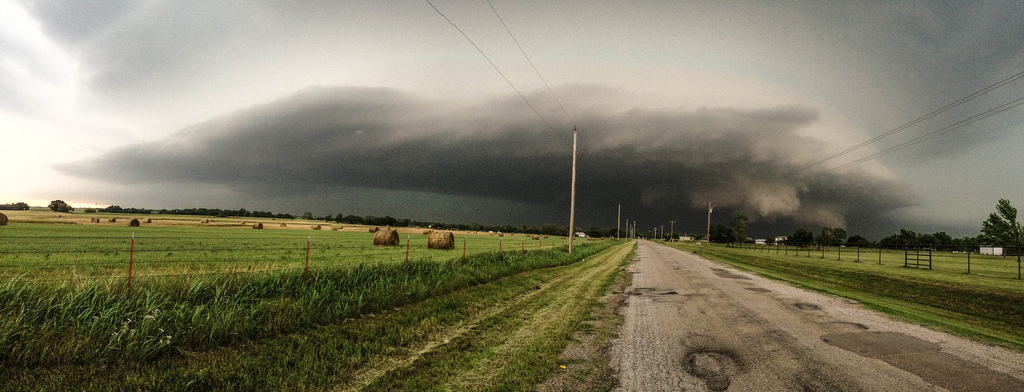[author image= “http://echo.snu.edu/wp-content/uploads/2016/01/Colton-Hadlock.jpg”] Colton Hadlock, Staff Contributor
Colton Hadlock is a sophomore at Southern Nazarene University. In his free time, Colton enjoys spending time with family and friends, riding mountain bikes off of bridges into ponds, playing musical instruments, being an unprofessional storm chaser and photographer. His favorite pastime is attempting to eat at every restaurant in Oklahoma. Colton has aspirations of becoming a weather journalist, a filmmaker and a musician. [/author]
The weather is finally warming up in Oklahoma, and it looks like you will not need your jackets and sweaters too much longer. The people who love the outdoors and want to wear T-shirts and shorts outside have already had a couple opportunities to do so. With warmer weather comes severe weather, and I caught up with Meteorologist Brandon Sullivan to give us a better look into severe weather season. To begin, I asked Brandon to talk about his schooling and professional career.
“I went to the University of Oklahoma and studied meteorology, earning my bachelors degree in 2014,” he said. “I started a company focused on short-term severe weather forecasting that I sold to AccuWeather, where I currently lead their numerical modeling team. I also chase with Tornado Titans, a group of a few good friends, who consistently go out and capture some of the most incredible tornado footage on earth!”
Sullivan is also one of the more respected extreme weather storm chasers. He is widely known for his storm chase of arguably the most horrendous tornado on record; the May 31, 2013 tornado in El Reno, Oklahoma, which claimed the lives of four storm chasers. This became the first known deaths in the history of storm chasing. The tornado was the widest on record, being 2.6 miles wide. I then asked the meteorologist what we can expect for this spring season.
“The models would generally lead us to believe that winter is ending and the warmer air is about to take over,” Sullivan commented. “The long-range models feature chances of thunderstorms with no major snow forecasted across the plains! I wouldn’t feel safe saying no snow, but I would say you can probably find yourself in a T-shirt more often than a sweater in the next month!” Sullivan said.
In most states the weather forecasting could end there, but living in Oklahoma the weather can be difficult to forecast. One day it could be snowing in northern Oklahoma, and meanwhile there could also be a tornado warning in southern Oklahoma. Then, while that is happening, an earthquake could likely be happening. Sullivan told me what to expect the severe weather season this year to look like for us Oklahomans.
“Historically, you can look at the pattern and see whether you are in an El Niño or La Niña to predict general things about the weather patterns, such as above or below normal severe weather events,” Sullivan commented. “The general outlook after a strong El Niño can cause a normal to below normal severe weather season, as it is the upper level winds over the southern plains that fuel severe storms, which can be weakened. This can feature more severe weather further south though, especially along the gulf coast, which we have already seen some of this year!”
Since we are in an El Nino weather pattern, I asked Brandon Sullivan to explain to me what that actually is.
“’El Niño’ refers to a band of warm ocean water, with above average sea temperatures, developing in the east central Pacific Ocean along the equator,” Sullivan continued. “This year it was exceptionally strong, with well above average sea temperatures across a large area.”
While it is good news for Oklahoma to be in an El Nino, I asked the meteorologist on what he recommended for college students to stay better weather aware.
“The best way to stay aware now a days is to have a weather alert on your phone!” Sullivan said. “I personally suggest StormShield, which gives you instant alerts for your location on all types of severe weather.I’ve found it’s not the best to simply rely on the schools or those around you to inform you, because they may be oblivious.”
To check out more of Brandon Sullivan and to see his footage, check out tornadotitans.com or his YouTube page, “Brandon Sullivan.” For more information on weather safety and the SNU weather guidelines, email me at chadlock@mail.snu.edu or check out my previous article from last week, “SNU Severe Weather Guidelines and Helpful Tips.”
